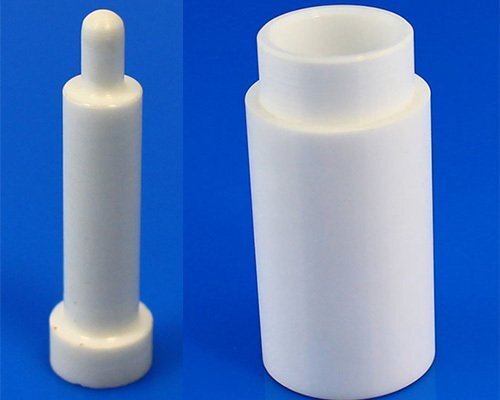With the advent of the digital age, optical communication technology has developed rapidly as an important branch in the field of information and communication. Driven by emerging technologies such as smartphones, 5G networks, cloud computing, and the Internet of Things, the optical communication industry is facing new development opportunities.Advanced ceramic materials, with their excellent performance, have already entered the optical communication industry chain and play a crucial role. The optical communication industry chain consists of optical chips, optical devices, optical modules, and optical equipment. Among them, optical chips and optical components are the basic components for manufacturing optical devices. At present, China is the world”s largest producer of optical components, and the market competition is fierce. Advanced ceramics have a place in the optical communication industry chain due to their excellent performance.
Optical Messenger: Fiber Optic Ceramic Insert
The emergence of fiber optic ceramic inserts has met the demand for high capacity, low loss, and low-cost technology in the field of high-speed information transmission, and has become a key component used in the connection of optical communication devices. Fiber optic ceramic inserts are mainly made of zirconia powder, and are processed through processes such as raw material mixing, granulation, injection molding, high-temperature sintering, and precision grinding. Ceramic inserts made from nano zirconia raw materials have the following excellent properties: Good coaxiality and dimensional accuracy, with small fiber docking errors; High strength, wear resistance, aging resistance and long service life; Low insertion loss and return loss, high insertion and extraction frequency; The end is easy to machine.

Fiber optic ceramic plug ceramic sleeve
Fiber optic ceramic inserts are usually used in conjunction with fiber optic ceramic sleeves. The fiber optic connectors made of ceramic inserts are detachable and classified fiber optic active connectors, making the connection and conversion scheduling of optical channels more flexible. Ceramic inserts used in fiber optic connectors account for 72% of the entire ceramic insert market, with approximately 25% of ceramic inserts used in optical passive devices such as splitters and transceivers, and a small portion of about 3% used in other optical active devices, such as semiconductor lasers.
The development space of ceramic shells is vast
Long distance transmission of optical communication requires airtight packaging, and electronic ceramic casing is the preferred material for airtight packaging. It is packaged with multi-layer ceramic insulators and adopts a multi-layer co fired ceramic insulation structure, providing electrical signal transmission channels and optical coupling interfaces for devices, providing mechanical support and airtight protection, and solving the interconnection between chips and external circuits. There are usually two ways to package optical devices: airtight packaging and non airtight packaging. Gas tight packaging, as the name suggests, is a type of packaging that cannot be penetrated by gas. Its purpose is to prevent external water vapor and other harmful gases from entering the interior of sealed optical devices, affecting the performance of optical chips and related components. Compared to metal materials, electronic ceramic shells have advantages such as high temperature resistance, corrosion resistance, good moisture resistance, as well as good thermal properties such as thermal expansion rate and thermal conductivity, high mechanical strength, and stable chemical properties, with excellent comprehensive performance.
Ceramic shell
The growth of the optical module market is also driving the demand for optical module casings, which are one of the key components. According to Yole data, the global market size of optical modules in 2022 is approximately 11 billion US dollars, a year-on-year increase of 9.09%.Light counting predicts that the global optical module market will have a compound annual growth rate of 11% in the next 5 years, and predicts that the global optical module market will exceed 20 billion yuan by 2027.Yole expects a compound annual growth rate of 12% from 2022 to 2028, and predicts that it will reach $22.3 billion by 2028.
